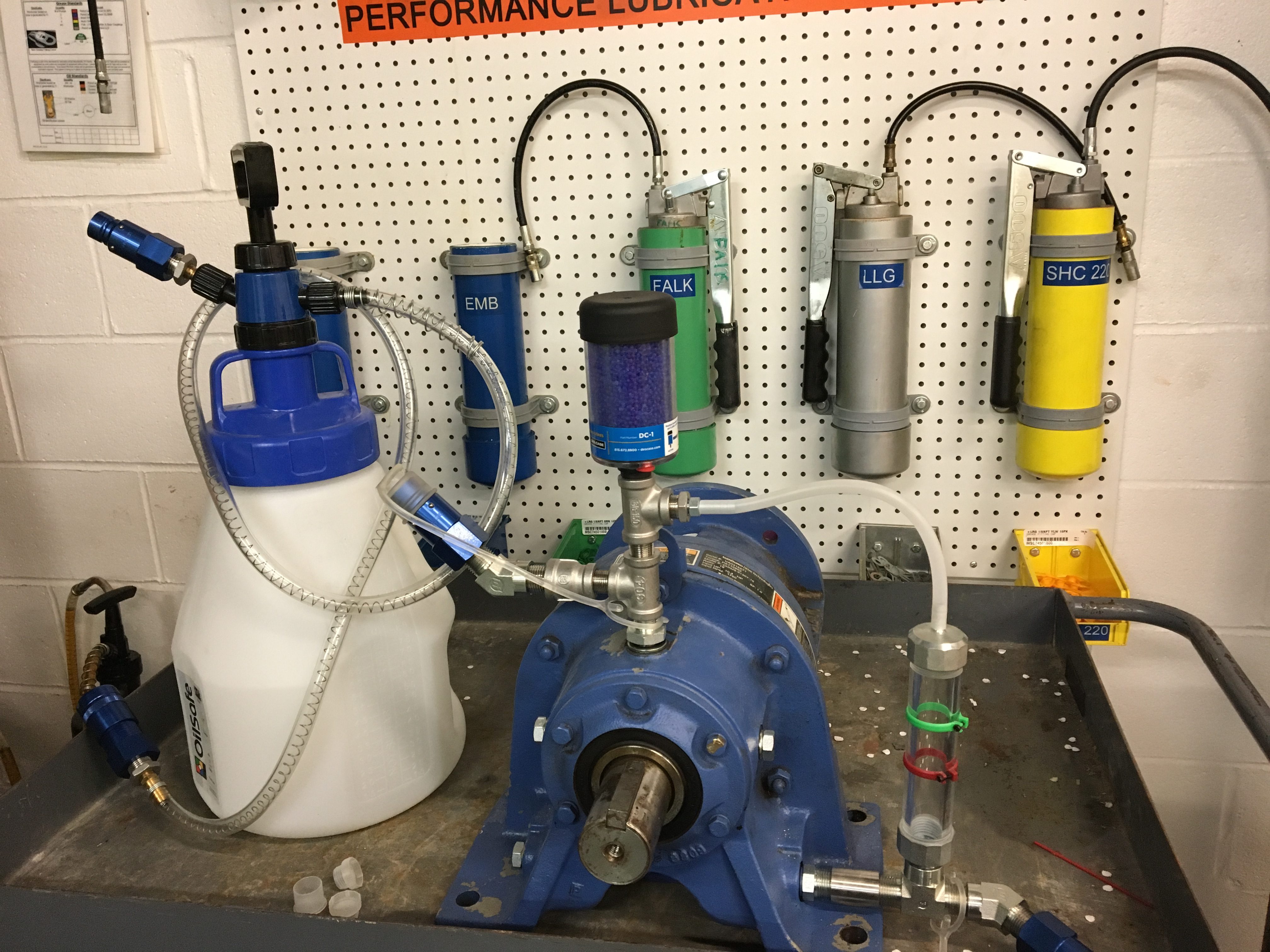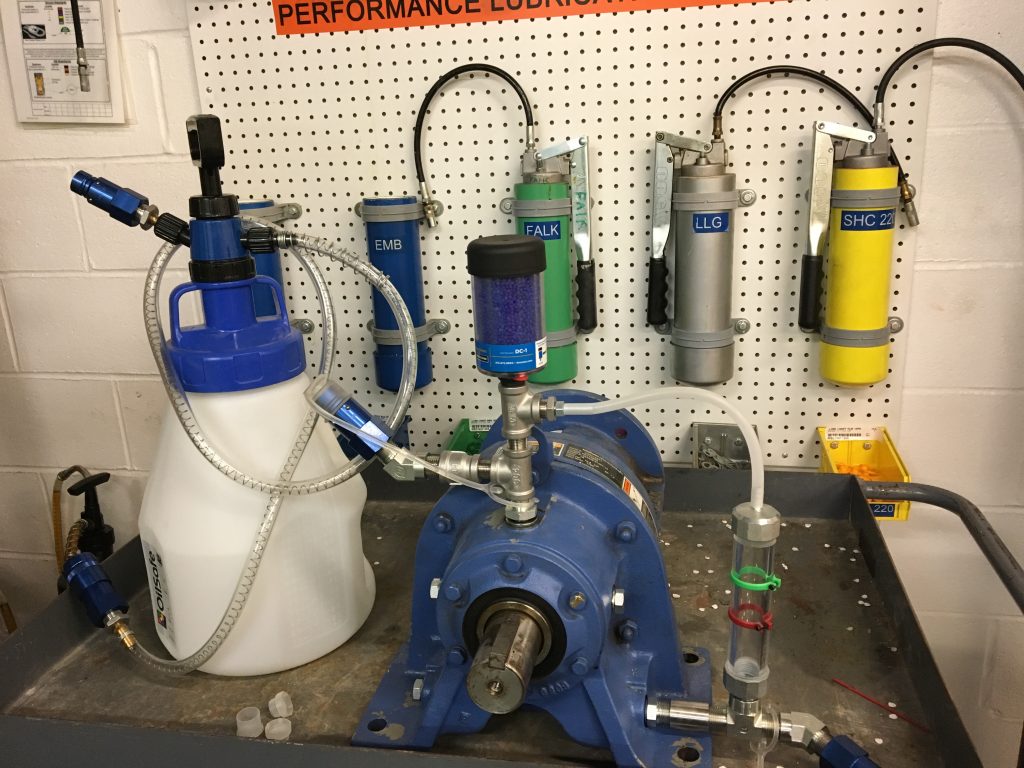
Equipment Restoration and Lubrication Standards
November 25, 2019 | By Peter Phillips

 There have been many books written about the importance of equipment lubrication; however, it is still one of the least consistent maintenance practices.
There have been many books written about the importance of equipment lubrication; however, it is still one of the least consistent maintenance practices.
Lubrication is considered the most basic element of any preventive maintenance program since the beginning of the industrial revolution. The necessity for proper lubrication has not changed since those early days. Yet I get report
of lubrication schedules being missed week after week. Below, what is a good lubrication standard and six steps to be included in any world-class lubrication program, will be outlined.
In an earlier article, I identified the wear components on the machinery. Wear components need lubrication in order to meet their expected lifecycle. Motors, gearboxes, drive components, and air cylinders need regular lubrication. We call them lubrication standards, which state the type of lubrication, amount of lubricant, and the frequency it is applied. It often states what tool is used to apply the grease as well.
The prescribed lubrication and frequency are included in a ledger (which was created in the September Maintenance 101 article) and are added to the preventive maintenance task in the CMMS. The lubrication work order is scheduled and completed by the tradesperson or a trained operator.
There have been many advancements in lubrication in the last decade, including improvements in the types of lubrication and how they are applied. New lube systems have specific lubrication fittings so the incorrect oil or grease cannot be applied by mistake. Lubrication lines and fittings are coloured coded and designed so the fittings must match or they will not work.
Sometimes the lack of lubrication is almost as bad as the incorrect lube. In the world of TPM, where operators are responsible for minor maintenance and lubrication, it is important to have foolproof lubrication methods. Other advancements include new styles of gearbox oil indicators, which are easily read, and refilling ports that only accept the correct oil.
The lube standard includes lubrication procedures that clearly state all the information needed to properly lube the equipment. The person doing the lube needs to understand exactly what lubrication to use, the quantity to apply, and how the steps to apply it.
Lubrication standards also state how the lubrication is to be stored and handled. In the past, lubrication storage and despising have not been conducive to keeping lubrication and its applicators, such as grease guns and funnels, clean. Generally, they have been the dirtiest place in the plant.
In today’s state-of-the-art lubrication storage rooms, oils and greases are kept clean and organized. Lubrication standards state how lubrication is received, stored, and transferred to containers. Oil spills have a large environmental impact, so it’s important that the standards include how to deal with lubrication spills.
Maintenance techs and operators are trained to use the new lubrication standards. Courses running an hour to several days are given to people who will carry out lubrication in accordance with the standards and lubrication maps specific to each machine.
Six Steps That Should be Addressed by Lubrication Standards
Lubrication System Assessment and Benchmarking
In this process, you assess the things that you do right as well as the things you need to do better. Contact your lubricant vendor and discuss how they can help with lubrication best practices. Take before and after pictures if you upgrade your lube storage and application methods.
Organization and Planning
This step is about ensuring that all lubrication tasks in the plant are completed at the right time with the right lubricant and the right quantity while using the right processes. Create specific lube standards for each piece of equipment.
Ensure that the right lubricant is added to a piece of equipment; a labelling system is needed. This is driven by the fact that, in large plants, multiple types of lubricants are used. Lubricants are complex chemical compositions and are often very incompatible, so to avoid errors of mixing lubes and to support industry standards, particularly in the food-grade industry, a good labelling system is necessary.
Schedule your lubrication routes in the CMMS and ensure they are completed properly and delivered on time.
Cleanliness Control
Oil contamination is a major source of component wear and equipment failure. Therefore, it is important that only clean lubricants are used in the equipment operation. Cleanliness control centres ensure that the lubricant is stored safely, is clean, and is transferred in a contamination-free environment.
Best practices for cleanliness control include the following:
• Only use fully sealed containers;
• Fit air breathers to all containers to prevent the ingress of water and contaminants from the atmosphere;
• Filter all oil to get it very clean.
• Only use contamination-free containers (i.e., containers that will not generate contaminants); and
• Make sure grease fitting and fill pipes are clean before adding oils and greases.
Lubrication Tools
Adding grease to a machine accounts for the majority of lubrication jobs. Therefore, it’s essential to have tools that are efficient and practical. Grease guns should be colour coded to ensure that the right lube gets in the right application. Colour coded grease guns, with one colour for each different grease, can help in this regard.
Environmental Control
Spilled lubricants can contaminate the environment. Therefore, most maintenance strategies today work to prevent such contamination from occurring. This is also a key ingredient in world-class manufacturing standards.
Lubrication Training
Maintenance workers must be taught the benefits of good lubrication practices. Trained tradespeople and operators are key to lubrication and the longevity of production and facility equipment. Best lubrication practices must be used or the equipment that has just been restored will revert back to its original state of disrepair.
There are many maintenance tasks that need to be performed and sometimes we fall behind in our PM program. There are some maintenance activities that must be completed as regular as clockwork, lubrication is one of those activities. MRO
